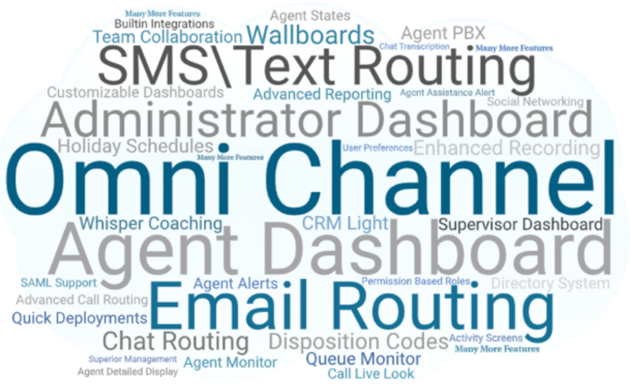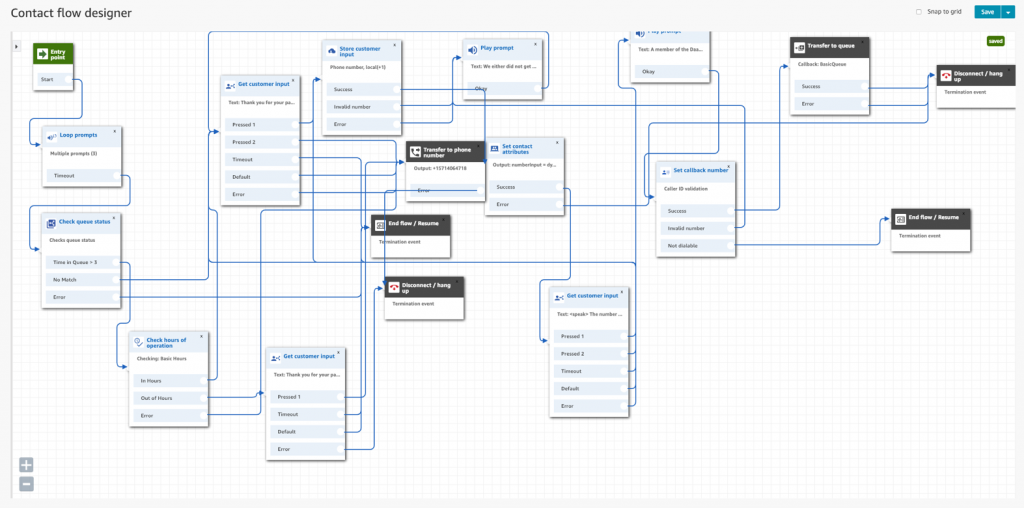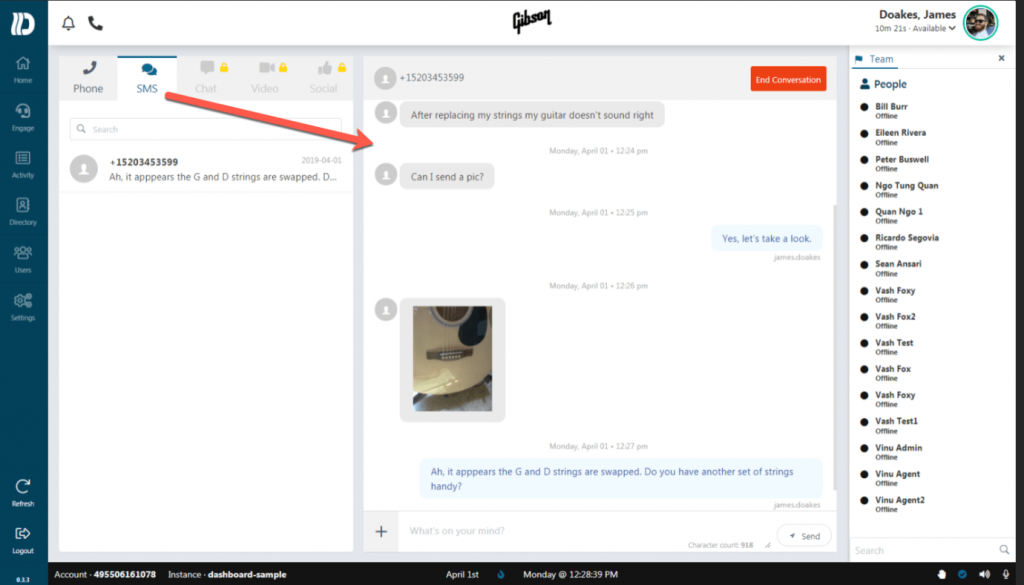
We Design, Deploy, Service and Customize Amazon Connect!
Since 2008 DrVoIP had been working in the support of VoIP based call centers from CISCO, Avaya and Mitel/ShoreTel solutions. Since 2017 we have focused exclusively on AWS services with a particular focus on ‘Amazon Connect” call centers. From Recording and Voice Mail solutions, through Workforce Management and Voice analytics we have provided custom software integrations on time, on budget and with the highest customer satisfaction scores. Our references are public, verifiable and serve as a guide to our abilities and commitment to excellence.
We are not here to run up your professional service bill. We are here to help you realize your call center vision an always work on a “fixed fee” basis.
We deploy “virtually” and “globally” so just click or call! – DrVoIP@DrVoIP.com
DrVoIP fixed cost deployment packages
- Complete design, deployment and training base package includes:
- Amazon Connect instance setup in customer AWS Account, with usage billing direct from AWS;
- Up to 10 inbound toll or DID numbers
- DNIS direct to queue routing or 1 IVR DTMF Options Menu
- Up to 5 Customer Service Queues
- English Language support (option for Spanish, French)
- Unlimited Agents
- We configure 5 Agents for your use as a template and you configure all the others you may want
- Up to 5 Routing Profiles
- Routing profiles bind Agents to the CSQ they are assigned to work in.
- Voice Mail with Email and SMS delivery
- Queue Hold with options for “call back”, voice mail, transfer or continue to hold for Agent
- Website Chat
- a single queue connector that enables website visitor to “chat” with call center Agent
- Dextr Dashboard integration
- Dextr can provide email routing, text routing, real time and historical reporting
- Fixed Price Deployment $2995
- Larger call centers quickly quoted!
- Up to 10 inbound toll or DID numbers
- OPTION PACKAGES
- Multiple Language support
- DIAL by Extension
- Each agent has faux Extension number that can be used for direct call to agent
- Dial by Name
- Speech Recognition enables caller to speak a name (i.e. Tom) or function (i.e. Sales)
- CRM Integration
- Standard Publish Connector for Salesforce, Zendesk, Freshdesk, ZoHo, ServiceNow and others
- Functionality defined by the CRM provider and author of the connector
- Standard Publish Connector for Salesforce, Zendesk, Freshdesk, ZoHo, ServiceNow and others
- CHAT BOT
- FAQ, or Data acquisition before escalation to a Call Center Agent.
- Amazon Connect instance setup in customer AWS Account, with usage billing direct from AWS;
- Free Trial of Dextr Dashboard is included!
To order an Initial Basic Configuration package and receive a detailed planing guide click here . Contact DrVoIP@DrVoIP.com or Better yet, Call 800-946-6127 ask LEX for the the Doctor!
Amazon Connect Call Center build strategy
We offer qualified companies a no cost “Proof of Concept “ (POC) Amazon Call Center Instance built in our portal for your use and testing with your agents able to log in and take phone calls on a number we provide. A POC can be set up within a few hours! From the POC, we design and deploy a solution that meets your requirements in your Amazon Connect portal. We make use of our discovery process and planning guides. We also build our solutions with our own Agent dashboard, named Dextr. Dextr provides the core feature set that all call center professionals expect including voice, text and email routing to the ‘next available agent’. We can also provide outbound “auto campaign dialers” to increase agent productivity for notifications, recorded announcements and appointment reminders.
Your TCO is further reduced, when compared to the cost of the software engineering or professional services required to obtain the same feature set as that available to Dextr subscribers. Dextr is a UCaaS solution that front ends Amazon Connect Instances with a custom agent dashboard and supervisor display. Any enterprise with an Amazon Connect instance can onboard themselves at https://Dextr.cloud. We deploy “virtually” and “globally” so just click or call!
DrVoIP Amazon Connect for the Business Manager
- What makes up a Basic Amazon Connect Call Center?
- Amazon Connect Discover Questions for Call Center Planning
- Amazon Connect Planning Guide
- Amazon Connect Historical Reporting Options
- The ROI and TCO when using the Dextr Dashboard
- Amazon Connect Check List
- Amazon Reporting Elements
- Understanding Amazon Connect Billing
- Amazon Connect & Dextr.Cloud Agent Dashboard
- Three Minute Video Overview of the Dextr Dashboard for Amazon Connect
- What are “soft limitations” on new accounts?
- Advanced Post Call Survey strategies
- Speech Analytics now a standard part of Amazon Connect and Dextr!
DrVoIP Amazon Connect for the Technical Manager
- Amazon Connect Basic Configuration Tutorial
- Amazon Connect Custom integration Tools
- Amazon Connect Configuration “tips and tricks”
- Tech Tip – Understanding LEX BOT Versioning and Alias
- Deep Call Back from Queue without losing your place in Queue
- Simple, Cheap and useful Voice Mail Solution
- Is Today a Holiday Check?
- Amazon Connect “Forced Release” Options
- Amazon Connect building prompts with Polly
- Building Conversational LEX Solutions
- Amazon Connect Call Back from Queue Options
- Email Routing in Amazon Connect
- What are “Soft Limits”
- Building Custom CCP for CRM Integrations
- SMS Inbound request for call back
DrVoIP YouTube Channel – Complete Amazon Connect Configuration training!





